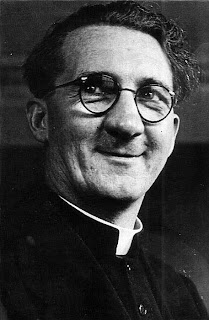Although he was born in Kiskeam, where his mother’s family were from, in North Cork, Monsignor Hugh O’Flaherty grew up in Killarney, where his father was the steward of the old Killarney Golf Club when it was located in Deerpark. Hugh had a vocation for the priesthood and as a young seminarian he was posted to Rome in 1922, the year Mussolini came to power in Italy. He earned a degree in theology in just one year while studying in Rome, was ordained in 1925 and continued his studies for a further two years, earning doctorates in divinity, canon law and philosophy. He was a skilled diplomat and served the Vatican in Egypt, Haiti, San Domingo and Czechoslovakia. After a period of 4 years he was recalled to Rome and was appointed to the Holy Office. He was also devoted to golf, from his early years playing in Killarney while in Italy he played regularly with Count Ciano, Mussolini’s son-in-law, and with the ex-king Alfonso of Spain. His high standing in the social life of Rome would stand him in good stead during the Nazi occupation of Rome. In the autumn of 1942, the Germans and Italians began to crack down on prominent Italian Jews and aristocratic anti-fascists. Having socialised with these people before the war, the Monsignor now hid them in monasteries and convents, in his old college and in his own residence. In the spring of 1943, his operation broadened to include escaped British prisoners-of-war and shot-down allied airmen. He developed a network of safe apartments in Rome in which they could hide. By the end of the war he had helped over 6,500 Jews, American and British Soldiers escape from the Germans and his activities earned him the nickname “Scarlet Pimpernel of the Vatican” as he became the master of disguises, evading capture from the Germans when he had to leave the security of the Vatican to go on his rescue missions. After the war the Monsignor received many decorations, including, Commander of the British Empire and the US Medal of Freedom. The Monsignor retired to Cahirciveen for the last three years of his life and on 30th October, 1963 he sadly passed away. His death was mourned throughout the world, including a front page tribute in the New York Times.
(From the Hugh O’Flaherty Memorial Society Website)
(From the Hugh O’Flaherty Memorial Society Website)












